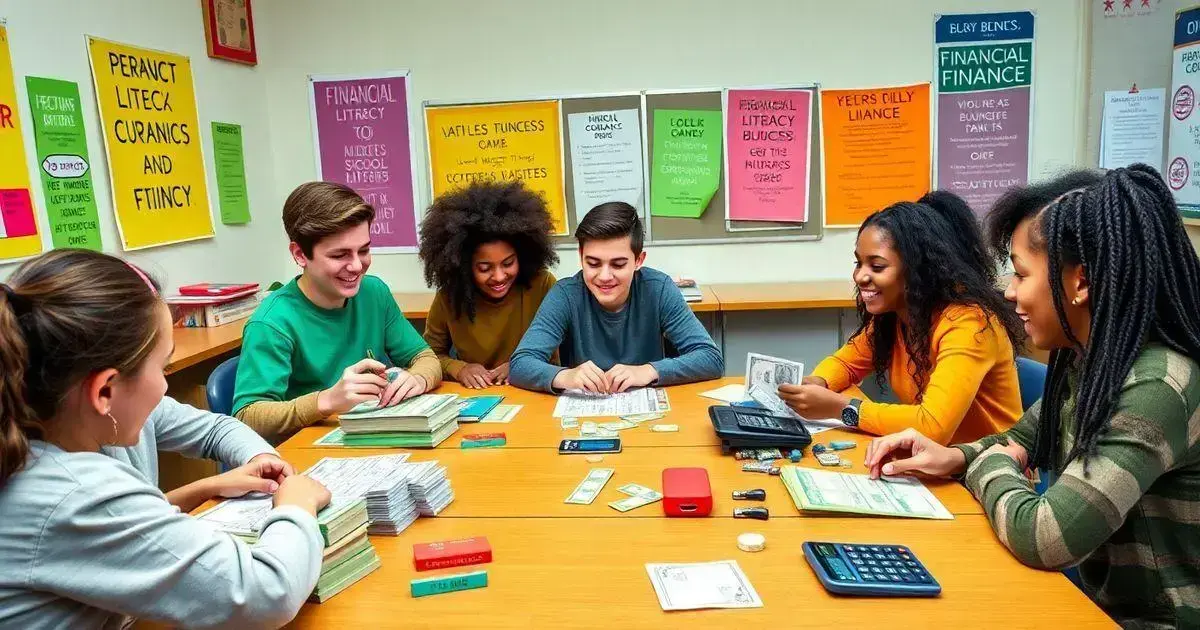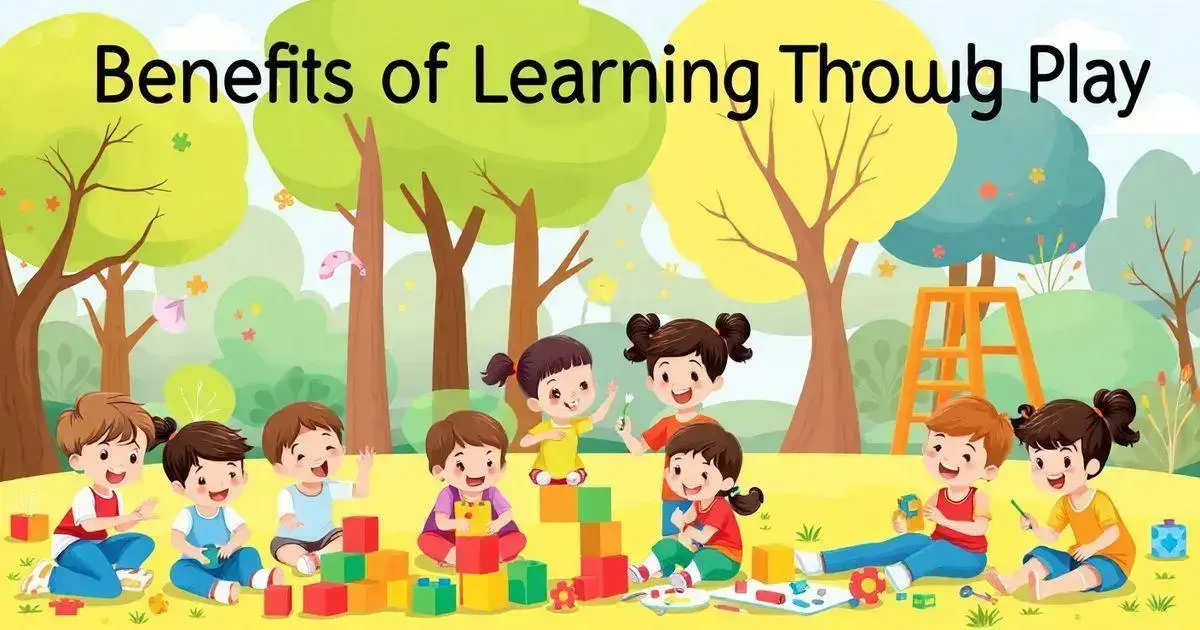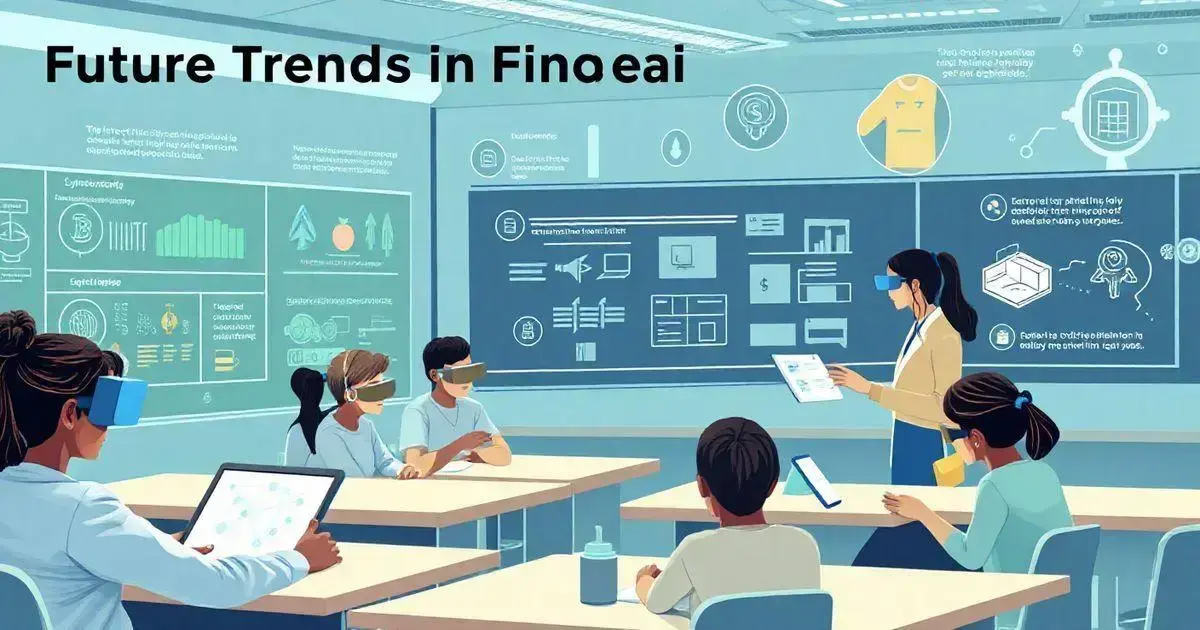Personal finance games for high school students are more than just fun—they’re vital tools for learning essential money management skills.
By engaging with interactive formats, students can grasp complex financial concepts in an enjoyable way.
In this post, we’ll delve into the reasons why these games are crucial, highlight some of the best options available, and discuss how educators can successfully incorporate them into their teaching strategies.
Why Personal Finance Games Matter
Understanding the importance of personal finance games for high school is crucial in our increasingly complex financial landscape. These games engage high school students in learning essential money management skills while having fun.
When students play these games, they experience real-life financial situations, which helps them understand the consequences of their financial decisions.
Moreover, personal finance games can help improve critical thinking and decision-making abilities. By navigating through various scenarios, students learn to budget, save, and invest wisely.
As a result, they become more financially literate and prepared for their futures.
Incorporating these games into educational settings creates an interactive and dynamic learning environment. Teachers can facilitate discussions around the games, enabling students to reflect on what they learned and how to apply it in real life.
This active participation makes the learning process more meaningful and memorable.
Top Personal Finance Games for High School

Top personal finance games for high school students can significantly enhance learning experiences. These games allow students to practice budgeting, investing, and managing expenses in a fun way.
Popular titles include Monopoly, which teaches the basics of real estate and money management, and Cashflow 101, designed to improve financial literacy and critical thinking.
Another engaging option is Financial Football, where students answer finance questions to make plays on a virtual football field. This reinforces knowledge while encouraging teamwork.
Additionally, Budget Hero helps players learn about budgeting in a captivating environment, simulating real-world financial scenarios.
These games are not only entertaining but also useful for developing important life skills. They can be used in classroom settings or at home, providing a versatile way for students to learn about personal finance.
How to Integrate Games into Learning
Integrating personal finance games into learning can transform traditional education approaches. Begin by selecting games that match the curriculum goals. Games like Monopoly teach money management while Financial Football reinforces financial questions. Implement these games during lessons to create a unique learning experience.
Create a structured plan for game sessions, including discussions after gameplay. Ask students to share their experiences and what they learned. This reflection enhances understanding and retention of financial concepts.
Additionally, educators can assign group projects to design their own finance games. This encourages creativity and teamwork while reinforcing financial principles. By embracing these strategies, teachers can effectively integrate finance games into their classrooms, making learning engaging and impactful.
Benefits of Learning Through Play

Learning through play offers numerous benefits for high school students, especially when it comes to personal finance games for high school. Engaging games provide a fun way to grasp essential concepts, making learning less intimidating.
Through gameplay, students can explore budgeting, savings, and investment scenarios in a safe environment. One of the primary advantages is that students retain information better when they are active participants. Interactive activities create lasting impressions and encourage deeper understanding.
They can experiment with financial decisions and observe the outcomes without real-life risks. Moreover, these games enhance critical thinking. Players must strategize and make quick decisions, which sharpens their ability to evaluate financial situations.
This skill is vital in today’s fast-paced world where financial literacy is key to success. Additionally, learning through play fosters teamwork and communication. Many games require cooperation among players, encouraging them to discuss strategies and share knowledge.
This collaborative approach builds a supportive learning community, further benefiting the students’ growth in financial literacy through personal finance games for high school.
Critical Financial Concepts Covered
Understanding critical financial concepts is essential for high school students to navigate their financial futures. These concepts provide a foundation for making informed decisions about money. Some of the key concepts include budgeting, savings, investing, and credit management.
Budgeting teaches students how to track income and expenses, enabling them to plan their finances effectively. By learning how to allocate their funds, they can avoid overspending and ensure they have enough for their needs.
Savings is another vital concept. Students should understand the importance of setting aside money for future goals, such as college or large purchases. Emphasizing the principles of compound interest can motivate them to save more.
Investing introduces students to the concept of growing their money over time. Learning about stocks, bonds, and mutual funds can spark their interest in the financial markets. They should grasp the relationship between risk and reward to make savvy investment choices.
Finally, understanding credit management is crucial. Students must learn how credit works, including credit scores, interest rates, and the impact of debt on their financial health. By grasping these concepts, students will be better equipped to manage their finances and make educated choices as they enter adulthood.
Case Studies: Effective Game Use

Case studies can highlight the effectiveness of personal finance games for high school in educational settings. For example, a high school in California integrated Cashflow 101 into their curriculum. Students participated in regular game nights, where they learned about investments and financial planning.
The results showed a marked improvement in students’ understanding of financial concepts. Many participants reported feeling more confident in managing their money.
An instance in a New York school featured Financial Football in their physical education classes. This innovative approach mixed sports with personal finance learning.
Students engaged actively, answering questions to advance on the field. Feedback indicated that students grasped budgeting and saving principles more effectively than through traditional methods.
Another case involved a community program that used Budget Hero to teach underprivileged youth about financial responsibility. Participants created their own budgets while discussing real-life challenges. Surveys after the program revealed increased awareness of savings and spending habits, emphasizing the practical impact of learning through play.
These examples demonstrate that integrating personal finance games for high school students into the curriculum not only makes learning enjoyable but also produces tangible benefits in students’ financial literacy.
Recommendations for Educators
Recommendations for educators looking to implement personal finance games in their classrooms can be very effective. First, select games that align with your learning objectives. Games like Monopoly and Cashflow 101 are great for teaching budgeting and investing principles.
Next, consider organizing play sessions regularly to engage students consistently. During these sessions, encourage teamwork and collaborative play to boost interaction and communication skills.
In addition, debrief after gameplay. Discuss what strategies worked and what didn’t. This reflection helps reinforce the financial concepts learned during play.
Another important recommendation is to differentiate instruction. Some students may benefit from more challenge, while others may need support. Tailoring the experience can help all students learn at their own pace.
Finally, utilize technology by incorporating online finance games or apps. This can provide students with flexible and fun ways to learn about personal finance outside the classroom.
Future Trends in Financial Education

Future trends in financial education are shaping how students learn about money management. With technology advancing, online learning platforms are becoming increasingly popular. These platforms offer interactive tools and resources that engage students in financial concepts in a fun way.
Another trend is incorporating gamification into lessons. By turning learning into a game, students are more likely to participate and retain information. Personal finance games for high school students, for example, provide an enjoyable way to understand complex financial principles, appealing to today’s students who enjoy interactive experiences.
Moreover, personalized learning is gaining traction. Educators can now tailor financial education to meet individual student needs. This ensures that all students grasp essential financial principles at their own pace.
Additionally, there is a growing emphasis on real-world applications. Programs are now focusing on practical skills such as budgeting for college or managing student loans. This connects classroom lessons to actual financial challenges students will face.
Finally, collaboration with financial institutions can enhance educational programs. Partnerships can provide students with resources, expert speakers, and even hands-on experiences in managing finances. Personal finance games for high school students also contribute to this by offering fun, engaging ways to practice real-world financial decision-making.
In conclusion, personal finance games are vital for education
They provide an engaging way for high school students to learn essential financial skills. By integrating these games into the curriculum, educators can enhance understanding and retention of financial concepts.
The benefits include improved critical thinking and practical application of knowledge that students will use in their lives. As we move forward, the incorporation of technology and innovative approaches in financial education will be crucial.
As students learn through play, they become better prepared to face real-world financial challenges, making them more confident and responsible adults.